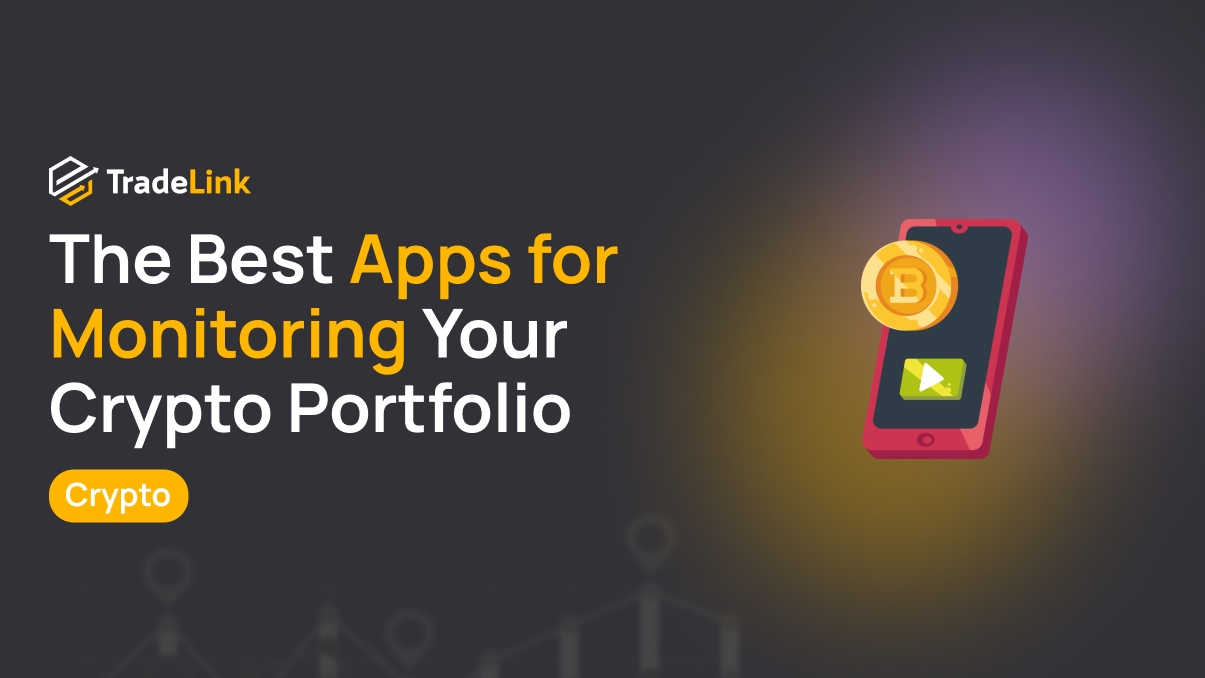The Best Apps for Monitoring Your Crypto Portfolio

Contents
- Introduction
- What are Crypto Portfolio Tracking Applications
- Main Types of Crypto Portfolio Applications
- Key Features of the Best Applications
- How to Choose the Best Crypto Portfolio Tracking Application
- Conclusion
Introduction
In the world of cryptocurrencies, prices fluctuate constantly, and traders and investors must maintain control over their assets. Crypto portfolio tracking applications help monitor changes in value, view overall dynamics, and make decisions based on up-to-date data. As a result, the convenience and accuracy of analysis increase, while balance and risk management become easier.
What are Crypto Portfolio Tracking Applications

Crypto portfolio tracking applications are digital tools that consolidate information about cryptocurrencies and transactions in a single interface. With their help, users can:
-
View current balances and asset allocation across coins or tokens
-
Record transactions, including purchases, sales, and transfers
-
Connect exchanges and crypto wallets via API for automatic synchronisation
-
Analyse portfolio dynamics and build performance charts
-
Track cryptocurrency prices in real time
Why Use Applications for Tracking Cryptocurrencies
The cryptocurrency market operates 24/7, making it challenging to track all changes manually. Specialised applications, as a rule, automate data collection and present a complete picture of all assets in a single window. On the other hand, quick access to metrics reduces the likelihood of errors and helps align decisions with market conditions more efficiently.
Convenience of Managing a Crypto Portfolio
One of the key advantages of such services is the concentration of information in a single location. The user views the entire portfolio, including coin balances and transaction history. As a result, decision-making is accelerated, and comparing results across different periods becomes easier.
Risk and Profitability Control
Applications help clarify the structure of assets: the share of Bitcoin, altcoins, and stablecoins, as well as how profitability changes over time. This generally improves the quality of assessments and supports a more balanced risk-to-return ratio.
Main Types of Crypto Portfolio Applications
Crypto portfolio tracking applications can be broadly divided into two formats: mobile and desktop. The first option is suitable for quick checks and operational actions, while the second is better for in-depth analysis and working with advanced functions.
Mobile Solutions
Mobile applications are convenient when it is essential to check a balance or coin price quickly. A smartphone is always at hand, allowing the portfolio to stay under control on the go or at work. This format is well-suited for fast decisions and basic monitoring.
Desktop Solutions
Programs and web versions accessed through a computer provide more opportunities. A larger screen makes it easier to work with charts, generate reports, and analyse profitability. Desktop solutions typically offer a comprehensive set of tools, including integration with multiple exchanges, detailed analytics, and data export capabilities. This format is often chosen by those who value depth of analysis and work with larger portfolios.
Key Features of the Best Applications

The best crypto portfolio tracking applications enable users not only to view balances but also to analyse their portfolios more thoroughly. They combine several essential features that make working with cryptocurrencies both convenient and transparent.
Feature | What it Provides | Why is it used |
Integration with exchanges and wallets | Automatic synchronisation of balances and transactions | Reduces manual input and errors, provides a complete portfolio overview |
Automatic data updates | Real-time reflection of asset values and price changes | Enables quick reaction to market movements |
Analytics and statistics | Asset distribution, performance dynamics, transaction history | Supports strategy evaluation and adjustments |
DeFi and multi-exchange support | Inclusion of tokens, liquidity pools, and assets across ecosystems | Consolidates all holdings in a unified portfolio view |
How to Choose the Best Crypto Portfolio Tracking Application

The choice depends on goals and working style. Consider several criteria: data protection, ease of navigation, availability of a free plan, and support for required currencies and networks. Below are popular solutions often used for tracking and analytics:
-
TradeLink Passport — a service for maintaining a public profile with transparent portfolio statistics and a wide range of performance metrics
-
CoinStats — a popular application for synchronising exchanges and wallets in a single interface
-
Delta — a tracker with an intuitive interface and advanced analytics
-
CoinGecko Portfolio — portfolio tracking combined with access to an extensive cryptocurrency market database
For Beginner Users
Simplicity and clarity are essential for newcomers. Helpful features include:
-
Step-by-step setup
-
Intuitive interface without unnecessary elements
-
Automatic balance updates
-
Connections to popular exchanges and wallets
For Active Traders
With intensive market activity, the following features are in demand:
-
Support for multiple exchanges simultaneously
-
Integration with DeFi services and multi-wallets
-
Advanced charts and performance statistics
-
Data export for external analytics
Free and Paid Solutions
Free versions typically cover basic needs, including exchange connections, synchronisation, and basic statistics. Paid plans add:
-
Detailed trade analytics
-
Flexible interface and reporting customisation
-
Support for more integrations
-
Priority technical support
Conclusion
Crypto portfolio tracking applications generally simplify asset management and improve analysis transparency. In most cases, the best results are achieved when the service is chosen in accordance with specific goals and work style. Some users require only basic tracking, while others need in-depth analytics and multi-exchange integration. As a result, portfolio manageability improves, and balance and risk control become more systematic.